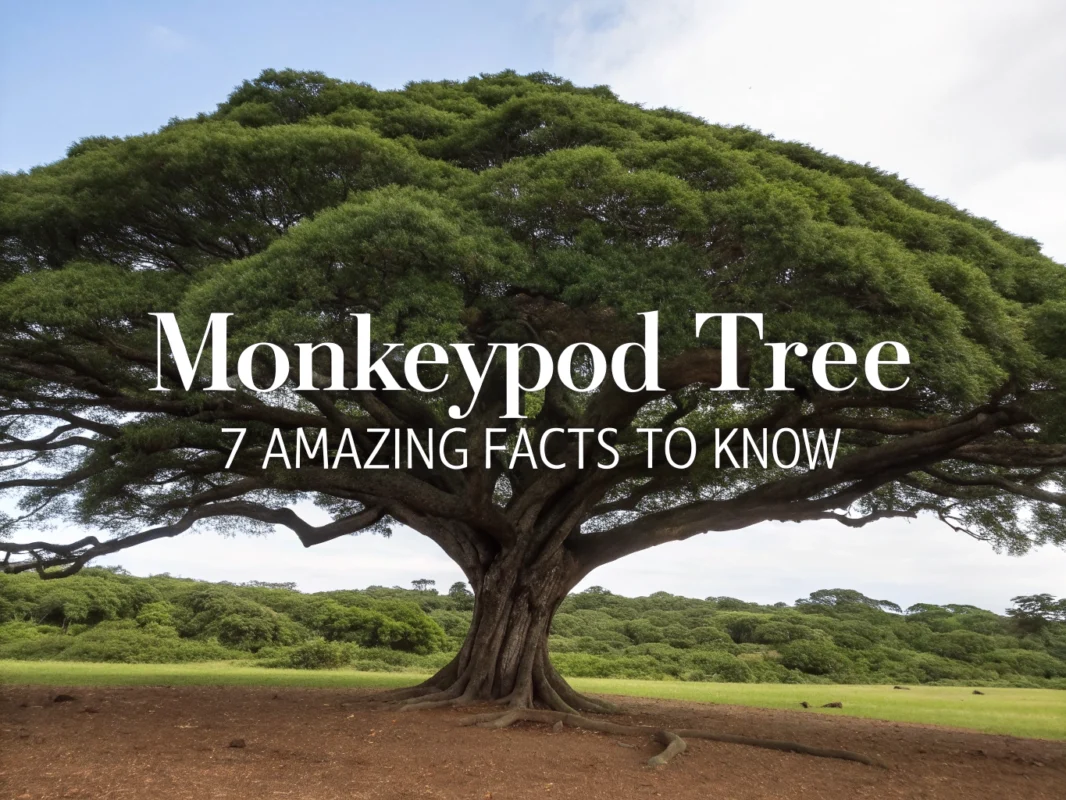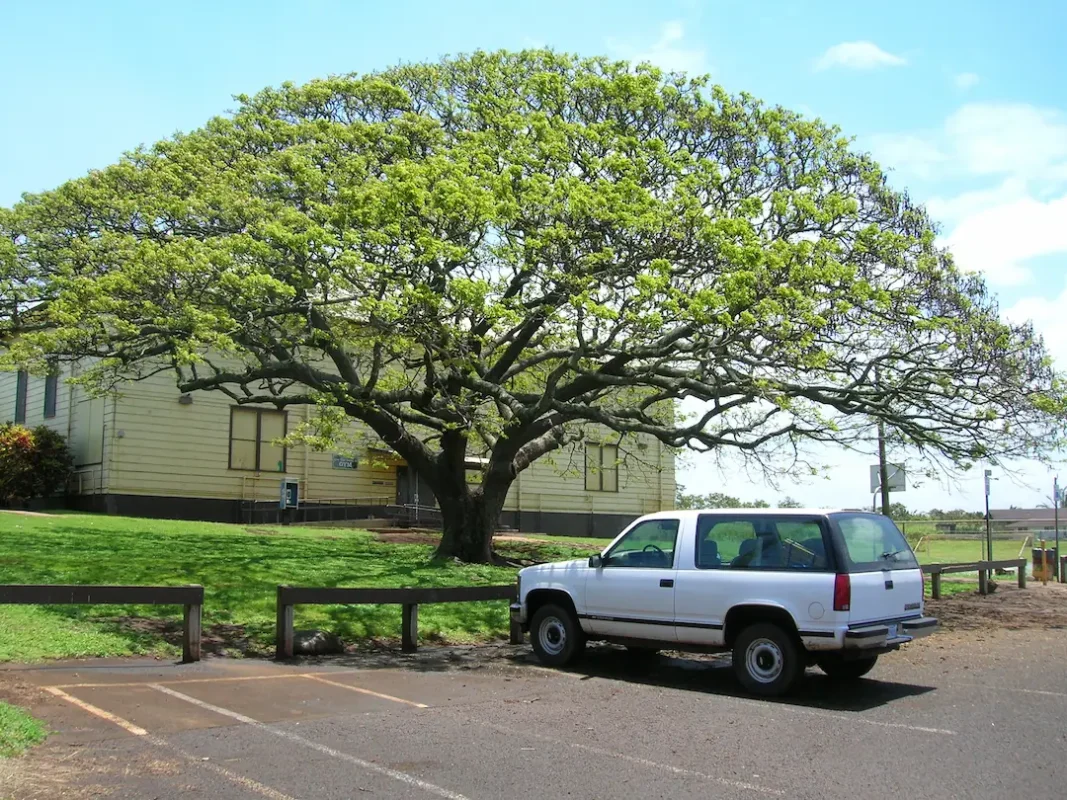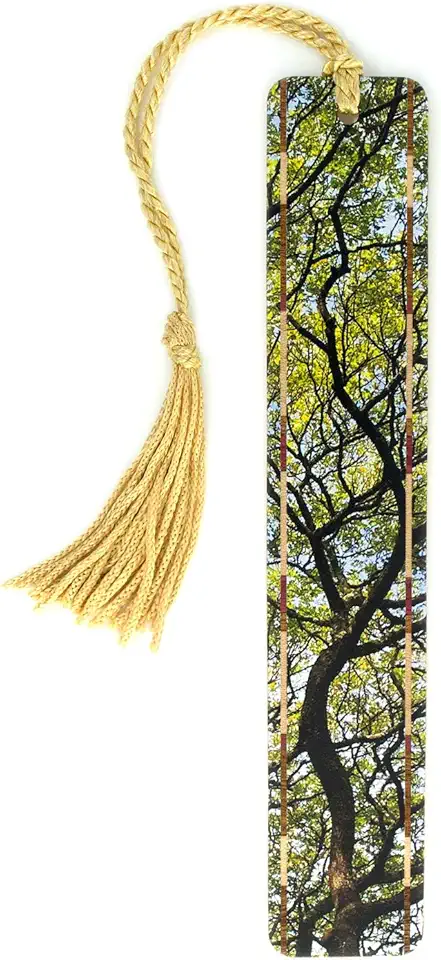
Have you ever wondered why some trees have an almost magical ability to close their leaves at night? The monkeypod tree is one such marvel. Known for its graceful, umbrella-like shape and the mystical rain-like sensation its canopy creates, this tree is full of surprises. Let’s uncover some amazing facts about this incredible tree that you might not know.
Table of Contents
The monkeypod tree (Samanea saman) stands as one of nature’s most impressive shade providers, featuring a massive umbrella-like canopy that can span over 100 feet and distinctive leaves that fold at night like sleeping hands. This remarkable tropical giant has earned multiple names across cultures – from “rain tree” to “samán” – and produces valuable monkey pod wood prized by craftspeople worldwide for its stunning grain patterns and natural shimmer.
The “Rain Tree” With Its Magical Leaf-Folding Canopy
The monkeypod tree’s nickname as the “rain tree” comes from its fascinating ability to create its own weather patterns. The dense canopy collects moisture from passing clouds and fog, causing water droplets to fall like gentle rain even on clear days. This natural phenomenon makes the area beneath these trees feel cooler and more humid than surrounding spaces.
What makes this tree truly magical is its nyctinastic behavior – the scientific term for leaf folding. According to University of Hawaii research, the diamond-shaped leaflets fold inward at night and during cloudy weather. This response to changes in light and humidity helps the tree conserve water and creates the distinctive “raining” effect as collected moisture drips from the folded leaves.

Multiple Names, Rich Botanical History
The monkeypod tree’s scientific journey reflects the complexity of botanical classification. Its accepted name is Samanea saman, but you’ll often find it listed under former classifications like Albizia saman or Pithecellobium saman. This taxonomic shuffling explains why plant tags and references show different scientific names for the same tree.
Common names vary beautifully across cultures. English speakers call it monkeypod or rain tree, while Spanish-speaking regions know it as samán. The tree belongs to the Fabaceae family – the same legume family that includes beans and peas. This family connection gives the monkeypod tree the ability to fix nitrogen in soil through specialized root bacteria.
Impressive Size and Distinctive Physical Features
Mature monkeypod trees command attention with their massive proportions. These giants typically reach 50-75 feet in height with trunk diameters of 2-4 feet, according to forestry data from Hawaii. The iconic umbrella-shaped crown can spread even wider than the tree is tall, creating natural pavilions perfect for gathering.
The tree’s bipinnate leaves consist of numerous paired leaflets arranged along branching stems. During flowering season, the canopy explodes with showy puffball flowers featuring threadlike stamens that are pink on the outer half and white toward the center. These blooms give way to flattened brown pods containing sweet, edible pulp that wildlife and humans have enjoyed for centuries.
Remarkable Environmental Adaptability
Few trees match the monkeypod’s environmental flexibility. Native to regions spanning from Mexico to Peru and Brazil, this adaptable species tolerates annual rainfall ranging from just 25 inches to over 150 inches. This wide tolerance explains its successful introduction across tropical and subtropical regions worldwide.
The USDA Forest Service documents the tree’s naturalization across South and Southeast Asia, Pacific Islands, and parts of Africa. This global spread demonstrates the monkeypod’s ability to thrive in diverse climatic conditions, from humid coastal areas to drier inland regions.
Prized Monkey Pod Wood for Furniture and Crafts
Monkey pod wood ranks among the most sought-after tropical hardwoods for its exceptional beauty and workability. The wood displays remarkable chatoyance – a shimmering quality that makes the grain appear to move and shift in different lighting. This natural shimmer, combined with attractive grain patterns, makes it perfect for high-end furniture and decorative items.
Craftspeople prize this wood for its durability and ease of carving. Traditional uses include furniture making, decorative bowls, and intricate wood sculptures. The wood’s stability and attractive appearance have made it a favorite for specialty woodworking projects across the Pacific region.
These handcrafted items showcase the natural beauty of monkey pod wood:

Handmade Hawaiian Wooden Bookmark
- Crafted from genuine monkeypod wood
- Option to personalize for a unique touch
- Made in the USA
- Lightweight and durable
Fast Growth and Exceptional Shade Provider
Monkeypod trees grow with impressive speed, quickly developing their characteristic spreading crown. This rapid growth makes them valuable for landowners seeking fast shade establishment. In open pastures, a single mature tree can provide shelter for dozens of cattle during hot tropical days.
The tree’s growth habit varies based on spacing. When planted alone, it develops the classic broad, umbrella shape with a short trunk. In closer plantings, the trunk grows taller and straighter as it competes for light. This adaptability makes monkeypod trees suitable for both ornamental landscaping and timber production.
Traditional Uses Beyond Ornamental Value
The monkeypod tree offers multiple practical benefits beyond its shade and beauty. The sweet pulp inside the seed pods has been used traditionally to make refreshing beverages. This edible pulp provides a natural source of sugars and has sustained both wildlife and human populations throughout the tree’s native range.
According to botanical sources, these trees serve as hosts for lac insects, which produce shellac used in finishes and lacquerware. As members of the legume family, monkeypod trees also contribute to soil health by fixing atmospheric nitrogen through their root systems, improving fertility for surrounding plants.
Growing and Caring for Monkeypod Trees
Successful monkeypod cultivation requires careful site selection and adequate space planning. These trees need full sun exposure and well-draining soil to reach their full potential. The massive canopy spread means you’ll need to plant them well away from buildings, power lines, and other structures.
Climate considerations are straightforward for tropical and subtropical regions. The trees prefer consistent warmth and can handle both wet and dry seasons. In urban settings, regular maintenance may be needed to manage leaf litter and fallen pods. The showy flowers attract various pollinators, making these trees excellent for supporting local wildlife populations.
These art pieces capture the majestic beauty of monkeypod trees:

Gorgeous Kauai Tree Art Print
- Beautifully depicts Kauai's natural beauty
- Ready to frame at 36x24 inches
- High-quality print for vibrant colors
- Unframed for customization options
- Created by artist Lisa S. Engelbrecht

Custom Framed Kauai Tree Art Print
- Available in various sizes and formats
- Stunning giclee print for vivid detail
- Choice of canvas or framed finish
- Adds elegance to any room decor
- Created by artist Lisa S. Engelbrecht

Huge Kauai Tree Modern Canvas Art
- Large 48x32 size for statement-making decor
- Black modern frame for a sleek look
- Canvas material for a gallery-quality finish
- Depicts the serene beauty of Kauai
- Signature piece by Lisa S. Engelbrecht
Space Requirements and Maintenance
Plan for a minimum spacing of 40-50 feet between monkeypod trees and any structures. The canopy can spread 80-100 feet or more at maturity. Regular pruning may be necessary in urban environments to maintain clearance from buildings and utilities. Dead-heading spent flowers and removing fallen pods helps keep the area tidy.
Wildlife and Pollinator Benefits
Monkeypod trees support diverse wildlife communities. The nectar-rich flowers attract bees, butterflies, and other pollinators during blooming periods. Birds often nest in the broad canopy, while the seed pods provide food for various animals. This makes monkeypod trees excellent choices for wildlife-friendly landscaping projects.
FAQs
What Are The Benefits Of A Monkeypod Tree?
Monkeypod trees are known for their beautiful, wide-spreading canopies that provide excellent shade. They are also beneficial for landscaping due to their attractive flowers and foliage, and they can improve soil quality by fixing nitrogen.
How Fast Does A Monkeypod Tree Grow?
Monkeypod trees are considered fast-growing, especially in optimal conditions, with growth rates of up to 3 feet per year. They typically reach maturity at around 50 to 70 feet in height.
Can I Grow A Monkeypod Tree Indoors?
While monkeypod trees are generally not suited for indoor growth due to their large size, young trees can be grown indoors for a short period. They require plenty of sunlight and space to thrive and should be moved outdoors as they mature.
How Do You Care For A Monkeypod Tree?
Monkeypod trees require full sun and well-drained soil. It’s important to water them regularly, especially during dry periods. Prune the tree to maintain its shape and remove any dead or damaged branches. Fertilize annually to promote healthy growth.
Are Monkeypod Trees Invasive?
Monkeypod trees are not generally considered invasive, but in some regions, they can spread aggressively due to self-seeding. Always check with local environmental guidelines before planting to ensure they do not disrupt native ecosystems.

